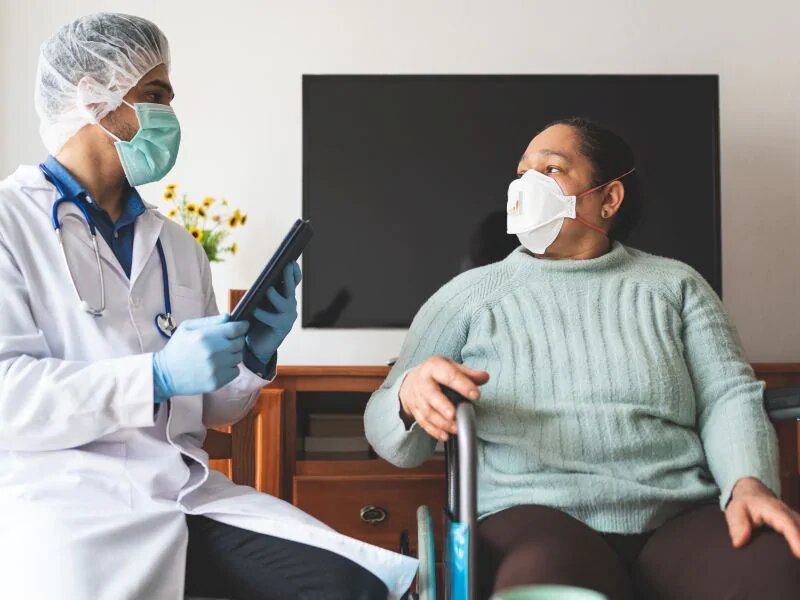

COVID-19 may not be just one disease, but six different types, according to a new British study.
The researchers added that each type differs in severity and in the need for respiratory assistance during hospitalization.
Cough, fever, and loss of smell are the usual symptoms of COVID-19, but the range of symptoms can include headaches, muscle pain, fatigue, diarrhea, confusion, loss of appetite, shortness of breath, and more.
For the study, the researchers analyzed data from 1,600 people who reported their symptoms in one app.
The six groups of symptoms in a sequence from least to greatest are:
- Headache, loss of smell, muscle aches, cough, sore throat, chest pain, no fever.
- Headache, loss of smell, cough, sore throat, hoarseness, fever, loss of appetite.
- Headache, loss of smell, loss of appetite, diarrhea, sore throat, chest pain, no cough.
- Headache, loss of smell, cough, fever, hoarseness, chest pain, fatigue.
- Headache, loss of smell, loss of appetite, cough, fever, hoarseness, sore throat, chest pain, fatigue, confusion, muscle pain.
- Headache, loss of smell, loss of appetite, cough, fever, hoarseness, sore throat, chest pain, fatigue, confusion, muscle pain, shortness of breath, diarrhea, abdominal pain.
The last three types are linked to the most serious illness, the researchers noted. The range of those with severe symptoms who need help breathing varies from about 9% to 20%, while those with milder symptoms who need respiratory help range from 2% to 3%.
Additionally, nearly half of the patients with the most severe symptoms ended up in a hospital, compared to 16% of those with the least severe symptoms, the findings showed.
Using a combination of symptoms, body weight, and other factors, the researchers developed a model that predicts which patients will need to be hospitalized and will need respiratory help.
“These findings have important implications for the care and monitoring of people who are most vulnerable to severe COVID-19,” said researcher Dr. Claire Steves of King’s College London.
“If you can predict who these people are on the fifth day, you have time to provide them with support and early interventions, such as checking their blood sugar and oxygen levels, and making sure they are adequately hydrated, simple care that could be provided in the home, avoiding hospitalizations and saving lives, “Steves said in a university news release.
The report was published online July 28 at medRxiv, a prepress server that does not include the rigors of peer review.
Unusual symptoms of coronavirus: what are they?
For more information about COVID-19, contact the U.S. Centers for Disease Control and Prevention.
Copyright © 2020 HealthDay. All rights reserved.
Citation: There may be 6 types of COVID-19 (2020, July 28) retrieved on July 29, 2020 from https://medicalxpress.com/news/2020-07-covid–1.html
This document is subject to copyright. Other than fair dealing for private research or study purposes, no part may be reproduced without written permission. The content is provided for informational purposes only.